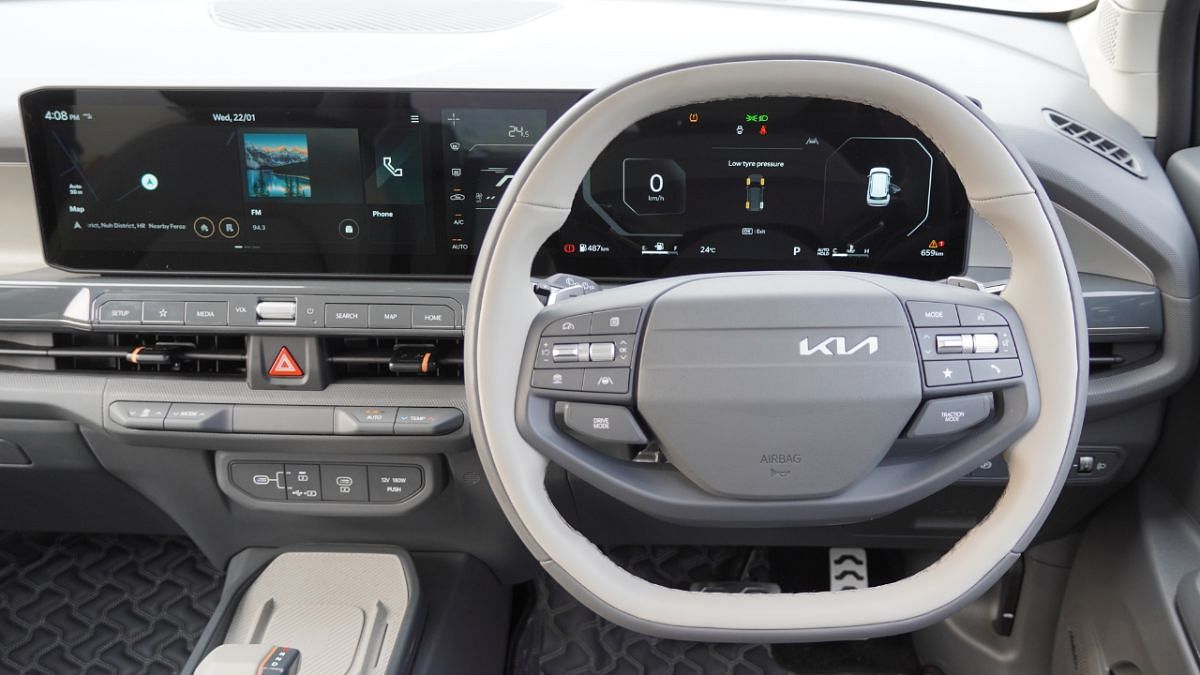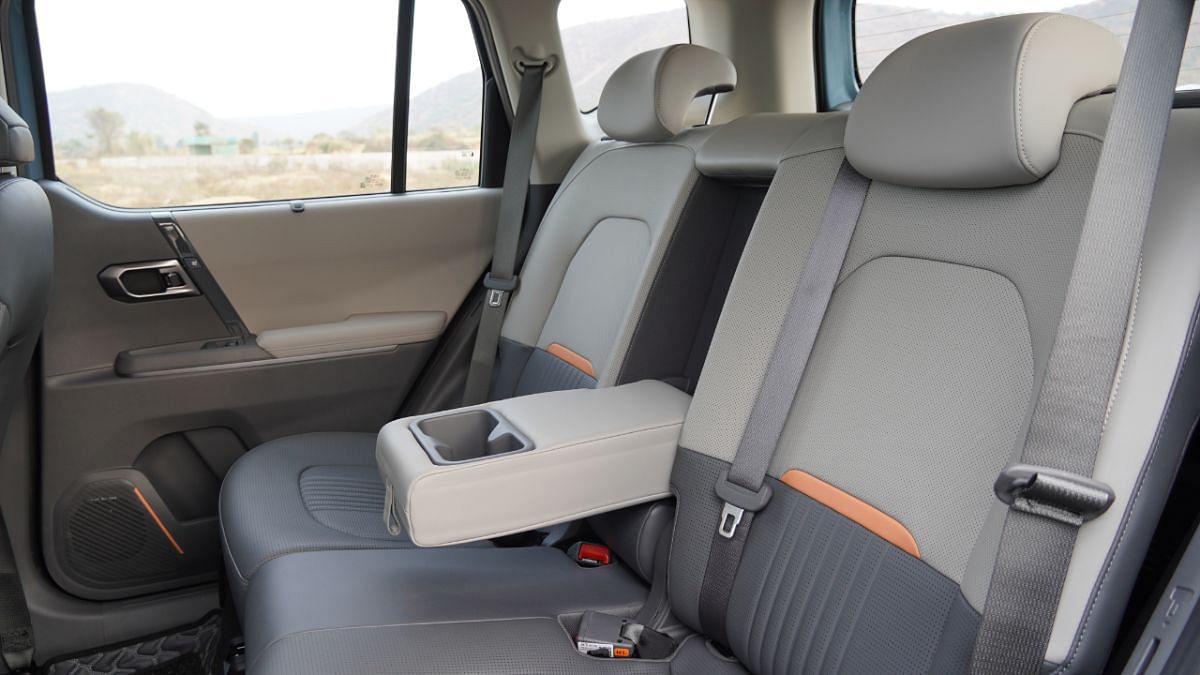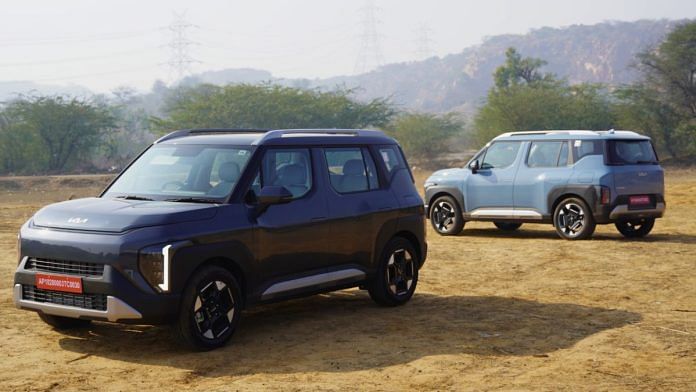The Kia Syros is a car that makes you go, “Hmmm.” When you see it, it looks odd—almost like a grown-up Maruti Wagon R, as several people have commented. But here’s the thing: in a world where cars and SUVs increasingly look so incredibly similar, the Syros stands out. Polarising designs work; they break the clutter.
Now, you might argue that you don’t want to buy a vehicle that looks like the Kia Syros. Admittedly, some aspects of its design left me genuinely puzzled. It looks as if someone put Kia’s much larger EV9 into a photocopier and hit the “shrink to 75%” button. Then there’s the B-pillar between the doors—while some carmakers are opting for frameless doors, the Syros is unapologetically chunky. And let’s not forget the unusually low placement of the taillights.
But you know what? I could go on about these quirks, but the real magic happens when you step inside the Syros. It feels like entering an entirely new dimension. The Kia Syros has the nicest cabin of any car in its class—and even a class above. Like the Skoda Kylaq I reviewed last week, it’s a CSUV (a compact SUV under four meters long). While I am not doing a direct comparison, these two cars are like chalk and cheese—one is about handling, while the other is about comfort and technology.
The Syros falls into the latter category. Its interiors feel premium. The first thing that struck me was the quality of the plastics. A glossy grey plastic bar runs through the middle of the dashboard, lending a genuinely high-end feel. The switchgear, the steering wheel with its offset, small Kia logo, the bronze trim accents throughout the cabin, the door handles, and the seat quality—all feel top-notch. As Max Verstappen would say, “Simply lovely.”


But would you buy a car solely for its cabin quality? The Syros doesn’t stand out in terms of performance. It shares its 1.0-litre turbocharged petrol and 1.5-litre CRDi diesel engines with the Sonet. In fact, since the Syros sits between the Sonet and Seltos in Kia’s lineup, performance seekers might find the Sonet a better choice. However, the Syros has an ace up its sleeve compared to the Sonet—and every other CSUV: space.
That same boxy, tall-boy design that divides opinions translates into a supremely comfortable rear-seat experience. The rear seats offer adjustable legroom, recline functionality, and even seat ventilation. And despite that, the Syros still provides ample luggage storage. It’s a perfect SUV for rear-seat passengers—better, in fact, than some vehicles in a larger class.
Additionally, the top-spec variants come with Level 2 Advanced Driver Assistance Systems (ADAS), providing safety features that only the Mahindra XUV3XO matches in this segment. The panoramic sunroof—thanks to the Syros’ tall design—doesn’t compromise headroom either. Interestingly, the Syros is the first mass-market Kia (and their sibling Hyundai) vehicle to offer wireless Apple CarPlay and Android Auto, along with an excellent Harman/Kardon audio system in the top variants.
Yes, I drove the Syros extensively, and it’s perfectly nice to drive. But what truly stands out is how pleasant it is to be inside. And considering you spend more time inside a car than admiring it from the outside, that makes Kia Syros a logical choice. That said, pricing remains a key factor— the Syros does have a starting price of Rs 8.99 lakh but the top HTX+ variants cost Rs 15.99 lakh (for the petrol) and Rs 16.99 lakh (diesel, all prices are ex-showroom) and ADAS is available as an additional option on the top variants at a cost of Rs 80,000 more. A fully-kitted out Syros would cost as much as the mid-variants of larger SUVs like Kia’s own Seltos.
However, if you don’t want a large SUV—perhaps due to parking constraints—but still desire the comfort, space, and technology of a bigger vehicle, the Kia Syros might just be the vehicle for you.
@kushanmitra is an automotive journalist based in New Delhi. Views are personal.
(Prashant)






